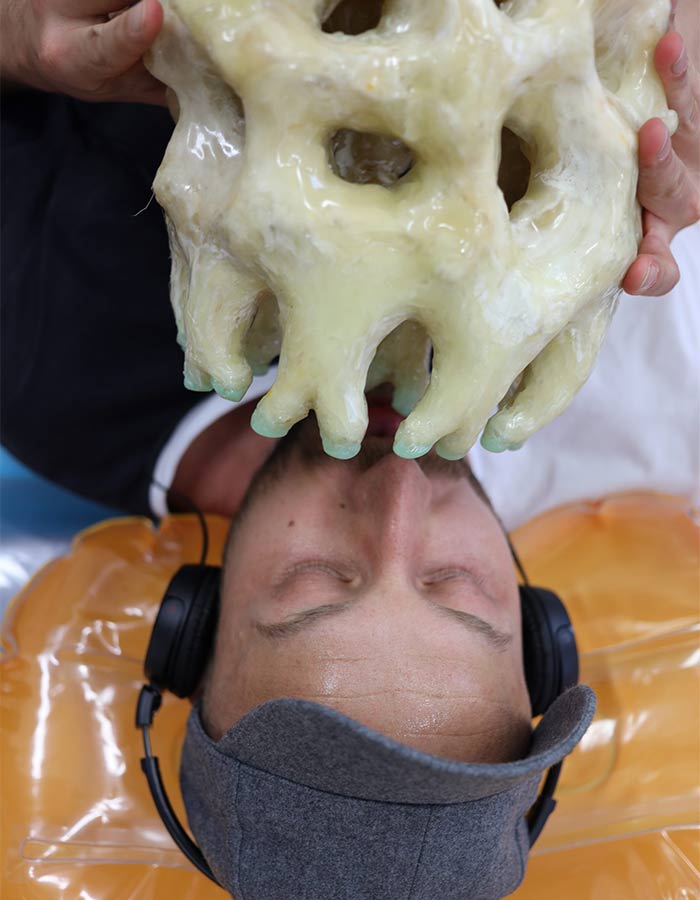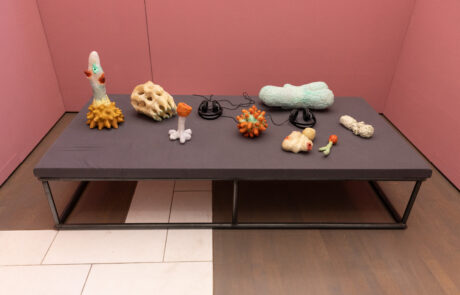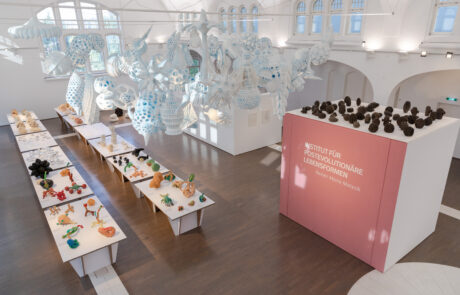Reiner Maria Matysik
21 August — 24 October 2021
Institute for Postevolutionary Life Forms
RAUM
Grant Exhibition Hall
FOTOGRAFIE
Irene Krieg, Stiftung Dieter Krieg
© VG Bild-Kunst, Bonn 2021
The exhibition at Kunstmuseum Heidenheim brings together several groups of works by the artist Reiner Maria Matysik.
The newly founded Institute for Post-Evolutionary Organisms at the Kunstmuseum Heidenheim offers visitors exciting insights into the future. This becomes clear through the example of various new types of organisms that have adapted to the changed conditions of our earth through specific properties and abilities. The exhibits made of wax, ceramics, Styrodur or 3D printing were developed by the artist Reiner Maria Matysik, who thus builds bridges between scientific research and artistic activity. He asks about the possibilities and consequences of evolution and human influence on it.
Several groups of these speculative creatures are presented in the Kunstmuseum Heidenheim. Visitors can learn more about their extraordinary forms of life and growth through texts and guided tours. What is striking here is that the boundaries between humans, plants and animals are no longer as clear-cut as we have been used to. Instead, we encounter hybrids that combine several evolutionarily developed abilities. For example, cactus-like creatures may move around with powerful arms and then hang themselves by their extremities. Other species can grow ice crystals on their bodies to survive low temperatures.
low temperatures.
These so-called bionts are also based on Matysik’s assumption that humans will and should actively intervene in evolutionary events. The incredible speed of development in genetic engineering and molecular biology already suggests that the future will require completely new thought processes. Here, above all, the human claim to dominance is at stake. Humans can no longer elevate themselves above other life forms, but must increasingly reach a symbiotic understanding in which technology, flora, fauna and science are in balance with each other. Matysik’s series Sexual Vegetation, in which he uses spoken texts and intimate spaces to encourage people to experience the new living beings physically and to unite with them, is also related to this.
The project Living Sculpture shows how many possibilities current research already has. For this, Matysik had his own skin cells removed in the laboratory. With the support of the German Institute for Cell and Tissue Replacement, he allowed the tissue to grow and now presents it as a grown work preserved in alcohol in the cabinet of the Kunstmuseum.
New living creatures will also be produced during the exhibition. In the first month of the show, designs by the artist will be printed in a state-of-the-art 3D printer from the company Voith in the museum foyer and integrated into the exhibition.
With his multiform visual reflections, Reiner Maria Matysik motivates the audience to think about the biological development of the world and to reflect on how much humans may or should intervene in it.





